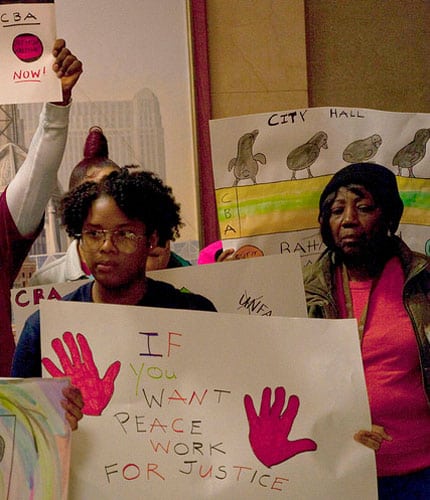
September 25, 2018; Chicago Tribune
The Obama Foundation released its 2017 financials early last week, providing an in-depth look at the organization’s priorities and the extent to which they match—or in this case, don’t match—the overarching narrative that the Foundation has been telling its Chicago South Side neighbors.
The Foundation has caused significant controversy over the past year, with Chicago’s public sector and activist groups raising questions on whether the Presidential Center at Jackson Park, the Foundation’s most significant project, will truly be of public benefit or simply a force for elitism and gentrification in Chicago’s South Side. Those flames were fanned again last week when the Foundation’s Form 990 filing revealed skyrocketing executive compensation, with Executive Direct Robbin Cohen making an outsized $827,834 annually, and with a fundraising bonanza of unknown—and therefore to many suspicious—origin.
One should look at this compensation a few different ways. Prime among them are:
- Does it conform to the compensation of like organizations—in this case, presidential libraries?
- What mission message does the compensation send to the community, which here includes a relatively low-income neighborhood concerned about gentrification?
A compensation comparison among other presidential libraries was done five years ago and reported that some directors have earned more than $600,000.That said, the 2016 Form 990 report from George W. Bush Foundation shows the Obama Library CEO’s compensation to be twice the highest there.
In the first full year of concentrated fundraising, the Foundation raised over $230 million, representing a significant leap from the $13 million in 2016. Alongside that leap, the Foundation decided to make its mega-donors anonymous. While the shielding of donors is not uncommon practice, the shift comes at a time when the Foundation is under fire from local residents for a lack of transparency and partnership with local leaders. Now, without knowing who the Foundation’s top donors are, it’s hard to understand what interests and investments might be at play.
Sign up for our free newsletters
Subscribe to NPQ's newsletters to have our top stories delivered directly to your inbox.
By signing up, you agree to our privacy policy and terms of use, and to receive messages from NPQ and our partners.
The Foundation’s explanation of this—by an anonymous spokesperson—falls flat.
At that time [prior to 2017], our goal was to make crystal clear that Foundation donors would have no influence in the White House. Now that President and Mrs. Obama are private citizens, in accordance with established philanthropic practices, the Foundation has updated its policy to no longer include contributors on the 990 but will continue to update contributors on obama.org/contributors.
Community and institutional residents of Chicago’s South Side, where the Foundation is building its most significant project—the Presidential Center in Jackson Park—are concerned that the Obama Foundation will accelerate gentrification to the low-income neighborhood. Community residents have demanded a community benefit agreement and City Hall has requested an endowment to cover costs and place the park in the public’s hands, neither of which have been granted to date.
While the Obama Foundation has responded that its primary focus is to enrich the economic and social development of South Side residents—starting a fellowship program in partnership with the University of Chicago, including a public library branch, and ensuring that its employing and contracting with women and people of color—the snapshot of where the Foundation’s expenditures are being focused doesn’t support that story.
Now, 2017’s financials reflect a moment from nine months ago, and it’s possible that the Foundation has shifted expenditures into more direct, community-benefiting activities in response to community pressure. Still, the core philosophy that the Foundation has put forth—in a lack of transparency and excessive executive pay—will likely stick for longer than its fiscal year in both its culture and in the minds of the public that it is purportedly designed to serve.—Danielle Holly











